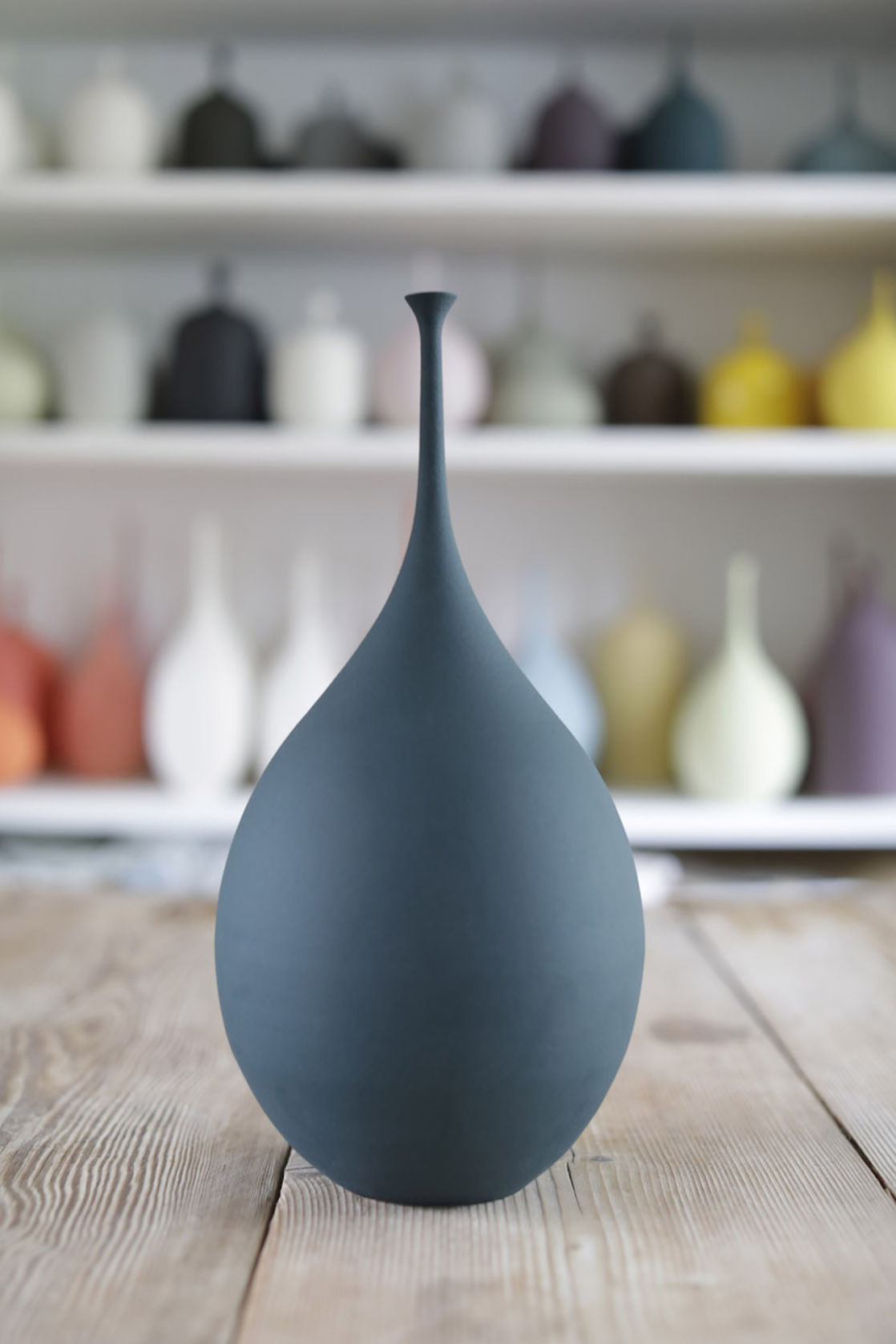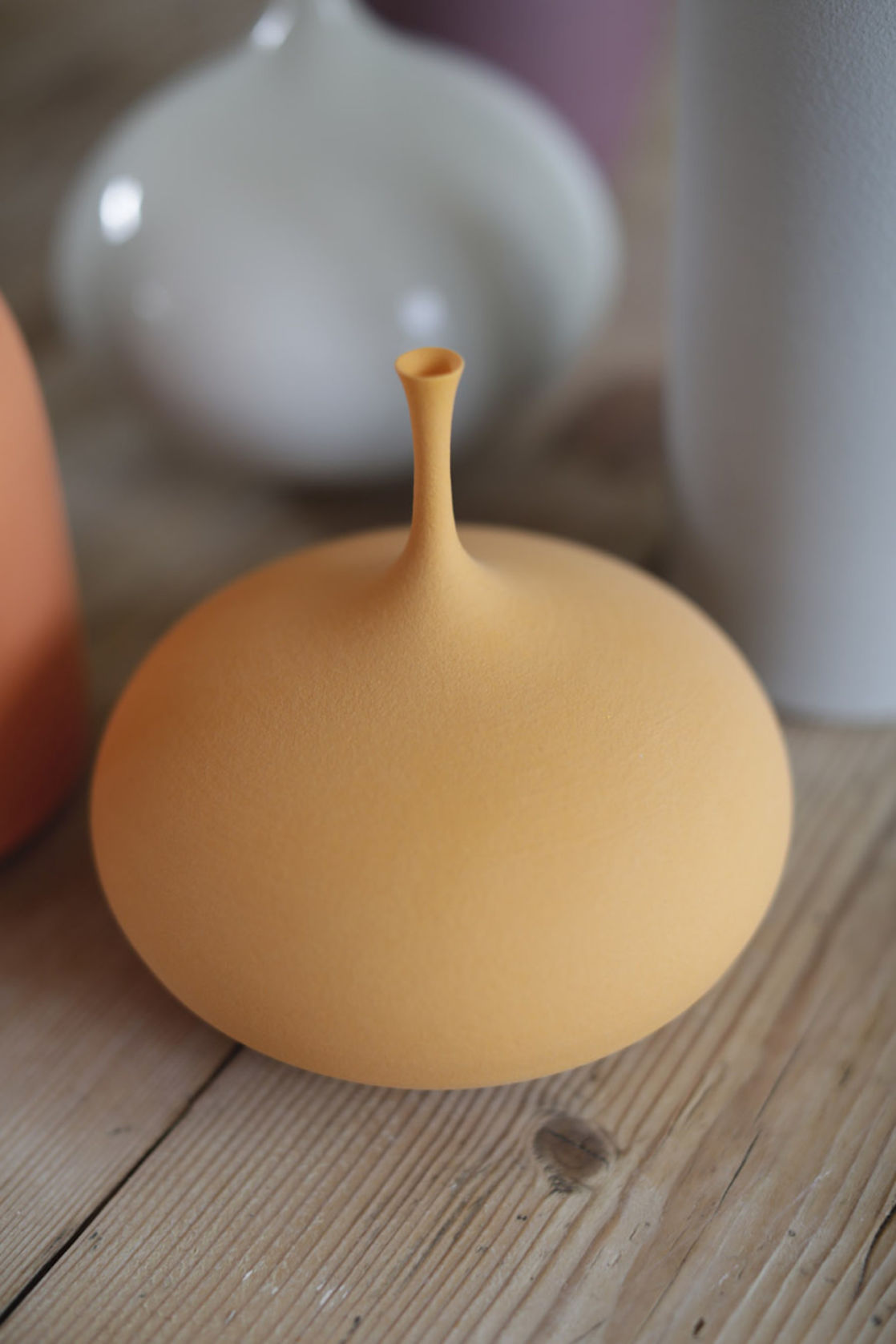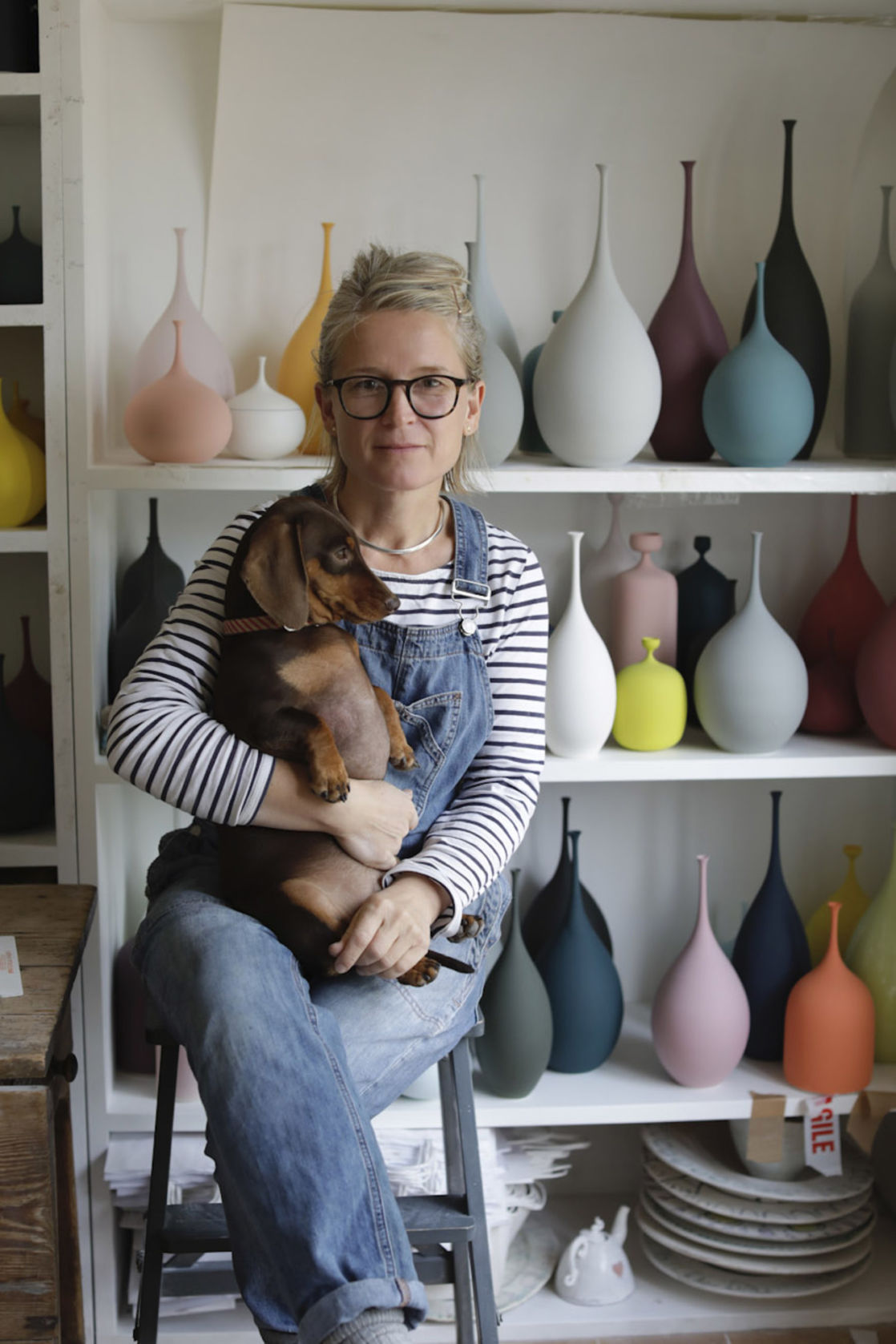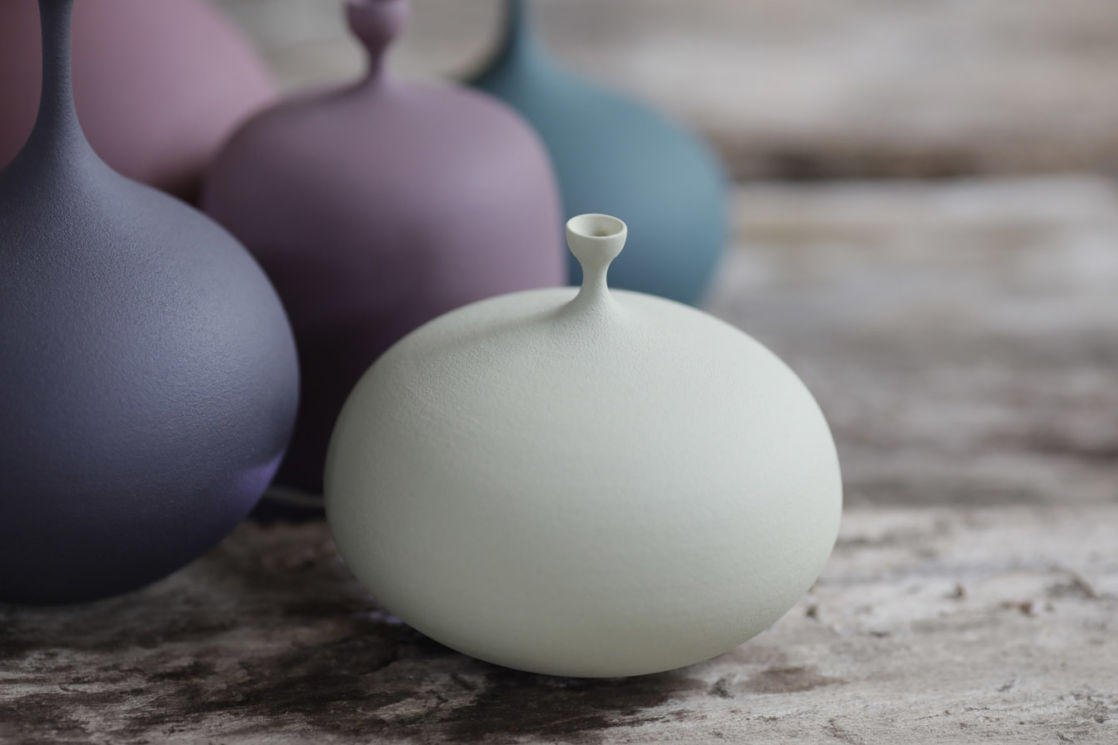Welcome to Ceramic Review
Ceramic Review is the magazine for contemporary and historical ceramics, ceramic art and pottery.
Ceramic Review Issue 334
July/August 2025
Ceramic Review is the magazine for contemporary and historical ceramics, ceramic art and pottery.
July/August 2025
Sophie Cook has spent her career mastering the art of throwing with porcelain. She spoke to CR’s Annie Le Santo about her ongoing mission to create refined forms with clean colours and perfect shapes

The pursuit of perfection has both thrilled and tormented artists for centuries and for Sophie Cook, this is no exception. Taking the shapes of bottles, pods and teardrops, her elegant porcelain vessels stand as evidence of more than 20 years spent dedicated to fine-tuning form and colour. ‘For me, both elements are equally important,’ she says. ‘I don’t set out with a particular vision when I begin making, but once I have a shape I like, I know what colour it is destined for.’ Born in Greenwich, South London, Cook’s upbringing was one that encouraged her appetite for making. She recalls her mother gifting her sketchbooks and plaster of Paris model-making kits, allowing her to sell the Fimo clay miniatures she made and placed on the windowsill to passers-by. Her father worked as a photographer and she considered following in his footsteps or training to become a chef, but finally decided on a foundation course at Camberwell College of Arts, where she initially specialised in textile design, until she found herself in the ceramics studio one day. ‘I remember being taken aback by the whole department – not just the actual work that was being made. It was the three-dimensional aspect of it all that excited me,’ she says. From there, with a limited ceramics portfolio, she was accepted onto the college’s BA Ceramics degree course.
THROWING EXPERIENCE
She started out working with lathes, slip-casting and handbuilding. It was only in her final year that tutor Jim Gladwin introduced her to throwing with porcelain. Enchanted as she was by the possibilities ceramics had to offer however, the thought of being a ‘professional potter’ was at that time out of the question. ‘One of the tutors asked the class: “Who is planning to go and start their own pottery studio in the countryside?” and I remember saying how I couldn’t think of anything worse,’ she reveals. ‘I was more interested in taking a modern approach – maybe working within a design studio.’
Put off by the brown ‘murkiness’ of pottery that she felt surrounded her, Cook felt compelled to create colours. ‘I was striving for a cleanliness that I hadn’t seen before,’ she explains. ‘I found freedom from making functional pieces after a conversation with the head of the course, Richard Slee. He explained how even though Edmund de Waal made rice carriers, nobody was actually putting rice in them. My bottles took a new direction after that.’ It seems despite Cook not initially choosing ceramics, it chose her. Her 1997 degree show was a success, leading to her work being shown at the exhibition New Designers and in a graduate showcase at the London gallery Contemporary Ceramics. Following this, she accepted an offer from ceramist Jane Muir to borrow her studio as a springboard. She began taking her pots around London, physically walking them from gallery to gallery to place under the eyes of curators. Some decided to take a chance and as they began to sell, she found herself becoming a professional ceramist almost accidentally. ‘I started out saying I would give it three months, which turned into six and then a year – and here I am, 23 years later with a ceramic studio in the countryside!’ she says, referring to her current workspace on the Suffolk coast.
CAREER MILESTONES
Over the course of the two decades that have followed her graduation, Cook’s ceramics have found their way into private homes, public collections and even aboard cruise ships. In 2008, her work was chosen to be in an exhibition of European design that toured museums in the US and she has also shown at Ceramic Art London. More recent achievements include her first solo show at Maud & Mabel, a gallery in London, in 2018, and another at Contemporary Ceramics earlier this year. These two particular milestones not only acted as pivotal moments in her practice, but also helped secure her personal identity as a maker.


‘I struggled with imposter syndrome and thought my work wasn’t being taken seriously,’ she says, ‘but something about the solo exhibitions gave me a new confidence. They made me feel accepted.’ A selection of Cook’s bottles is on permanent display as era-defining pieces within the 1990s section of The Geffrye Museum in London (also known as The Museum of the Home). It is opportunities like this, along with ones that are interior-design driven or result in people ‘living’ with her work, that most inspire her. ‘I love it when someone sends me a photo of their shelves and offers me free rein to fill them,’ she says. Her pieces are nearly always found complementing one another in groupings, and for Cook, the arrangement of them in a space is almost as important as their making process. Described as a ‘collector’s dream’ by author Olivier Dupon – ‘the more you own, the better they look’ – the nature of her ‘sets’ echo the repetition that is ingrained in their production. ‘Each day I throw four pieces of the same shape,’ she explains, ‘and I’m always looking to see which I like the best.’ After two days of drying, the pots are then carved for a refined silhouette – a stage that can occupy Cook for hours. Once spray-glazed, they stand to dry for a week and are fired to 1250°C. It is an incredibly delicate operation and rarely, if ever, do all four pieces survive. ‘I can spend hours turning a piece just for the neck to snap at the last moment,’ she says. ‘Sometimes I can salvage these for studio sales, but they often won’t be good enough to go to a gallery.’ Making peace with the brutality that comes with holding her work to such a high standard is something that has taken Cook years to master. In the early days, when she had a studio in London, a pot deemed unsuitable could end up at the bottom of the Thames. ‘It still drives me mad at times,’ she says, ‘but I have learnt to live with it.’ When things do go to plan, however, the results are captivating. Practice makes perfect and Cook has had lots of practice. Her meticulous ways mean she produces excess, and her studio is a ‘sweet shop’ of shelves filled with curvaceous forms in a rainbow of colours.
BREATHING SPACE
The spring lockdown of 2020 provided Cook with the opportunity to slow down her usual intense schedule and granted her time to try new things in the studio. Her most recent fixation is on the necks of her bottles. ‘I’ve been searching for the ideal shaped neck,’ she explains. ‘In the past when I found a form I liked, I used to stop there and keep reproducing it, but lately I have just been enjoying experimenting. Some necks are really wide and some are really small. Working with this variation feels good.’
As we approach the end of the year, Cook is busy with Christmas orders, but she is keen to continue developing her practice at her own pace, and maybe even venture into new mediums. ‘I never look forward and I never look back,’ she says. ‘I have no particular goal in mind but I’m always striving to find the next perfect shape or the next perfect colour – it’s an obsession.’
